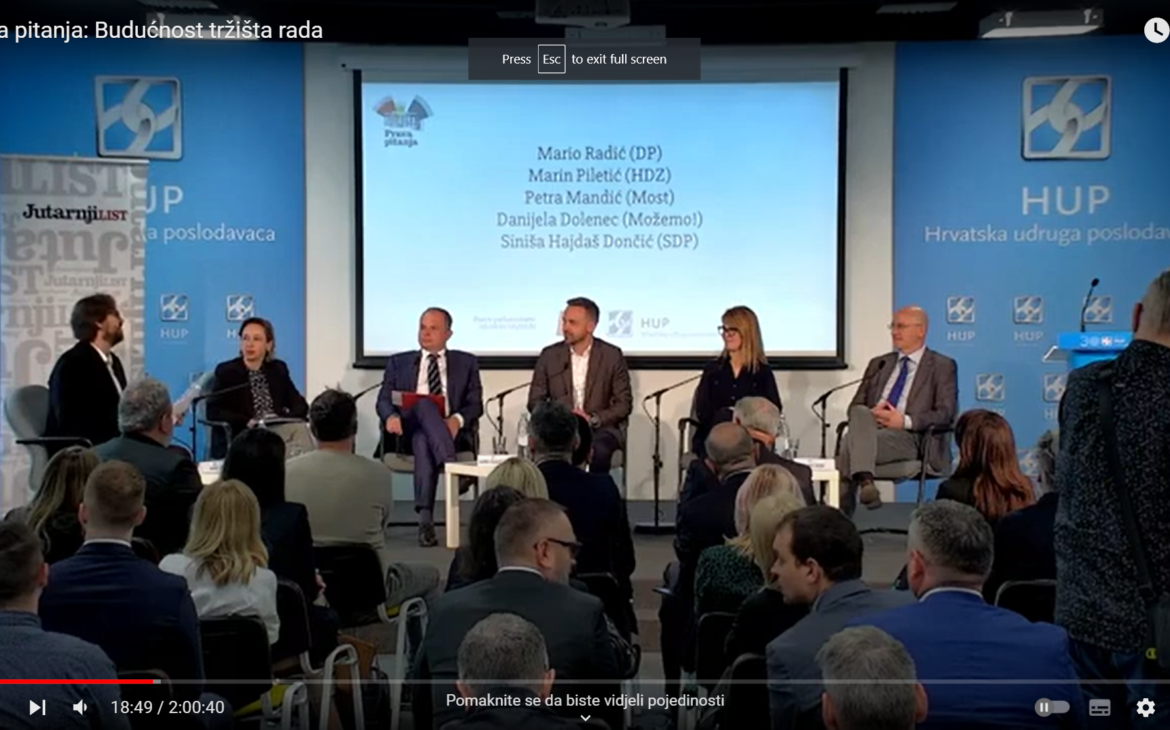The claim that 48% of total tax revenues in Croatia comes from consumption, 44% from labor, and 8% from capital and property is COMPLETELY FALSE.
On the official YouTube channel of Jutarnji list, a debate on the topic “The Future of the Labor Market” was broadcast on April 4, organized by Jutarnji list in collaboration with the Croatian Employers’ Association. Representatives of the five most popular Croatian parties: Mario Radić (Domovinski pokret), Marin Piletić (HDZ), Petra Mandić (MOST), Danijela Dolenec (Možemo!), and Siniša Hajdaš Dončić (SDP) discussed major economic issues.
Boris Orešić, a journalist from Jutarnji list, asked all present representatives of political options whether the state has room to relieve labor taxes. Danijela Dolenec, the representative of Možemo!, stated: “Of the total structure of tax revenues in Croatia, 48% comes from consumption taxes, 44% from labor, and then capital and property 8%.” (Source: Jutarnji list YouTube channel, 1:07:05 minutes)
We investigated the statement and found it to be MOSTLY FALSE.
The statement does not refer to a specific budget year, making it impossible to confirm. If we take the Annual Report on the Execution of the State Budget of the Republic of Croatia for 2022 available at the provided link.
Or the latest Amendments and Supplements to the State Budget of the Republic of Croatia for 2023 available on the Narodne Novine website.
It is not possible to determine how the three summarized categories of revenues from consumption, labor, and capital and property were derived, as there are other revenues like fines, administrative measures, and other income that cannot be classified into any category, and the summed percentage points give 100%.

